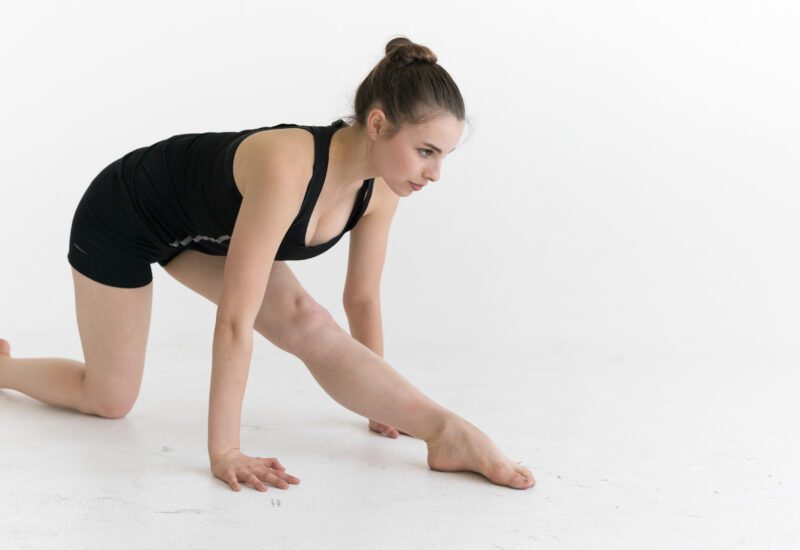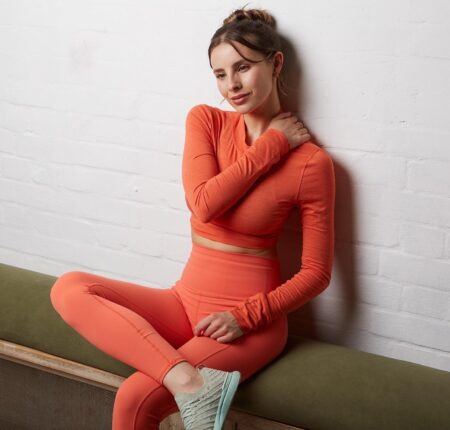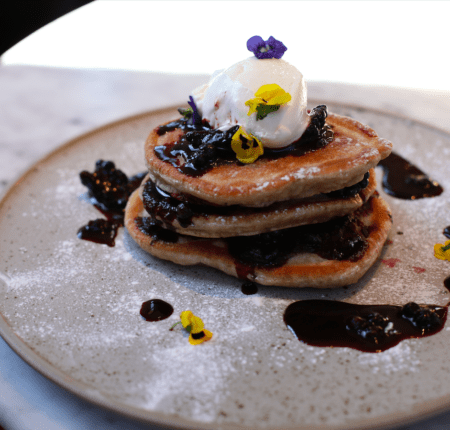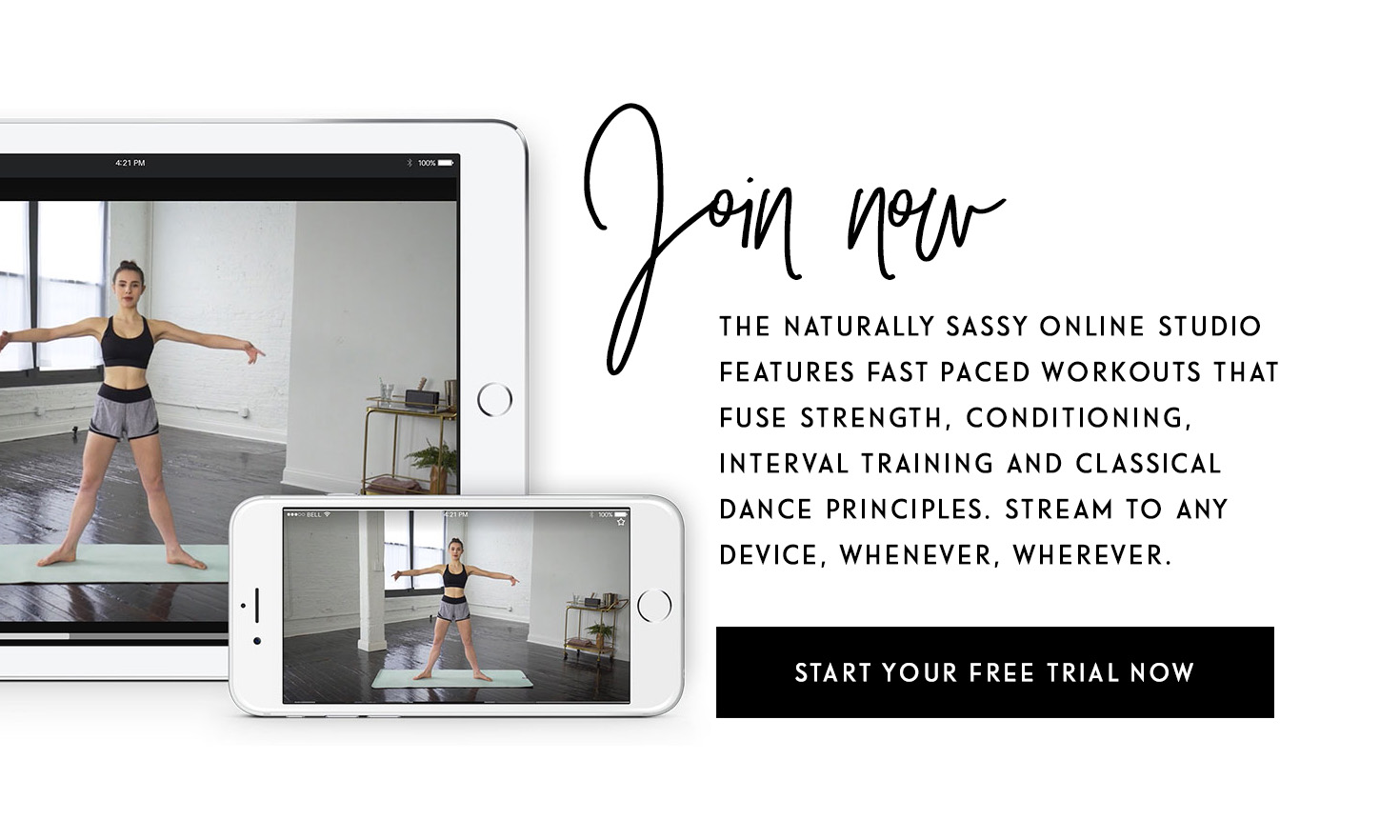Whether you’re a seasoned athlete or just starting out on your fitness journey, stretching should be a core part of your workout regime. While it’s important to make time for a stretching routine pre- and post-workout regardless, stretching for flexibility can actually be done at any time. That said, I generally find stretching more effective when done post-workout as my muscles and joints are already warmed up.
Regardless of whether you’ve had a strong workout routine for years or you’re looking for a stretching guide for beginners, this easy-to-follow guide is for anyone wanting to kickstart or maintain their flexibility routine. These stretches will also work to ease tightness, prevent injury, and quicken recovery periods between workouts.
If you really want to invest in improving your flexibility, you should take a look at my six week stretching programme. It’s accessible to everyone, so you don’t need specialist equipment to get started and feel the benefits. You’ll learn a range of movements during this time, which can be incorporated into your daily routine or regular workouts for years to come.
To get your started though, here are some of my favourite types of stretches, how to do them and their unique benefits. Enjoy!
Types of stretching
There are two main types of stretching: dynamic and static. I use them both in some shape or form in the Naturally Sassy online studio and in my six week stretching programme. Although they seem very similar, there are subtle differences between them.
Dynamic stretching
Dynamic stretching uses a full range of movements and tends to be used to warm up our muscles and joints before exercising. It is often confused with active stretching which is when you flex and fully extend your muscles without any additional force (the poses/stretches are held rather than incorporating movement).
Static stretching
Static stretches are the opposite to dynamic stretches. While both are effective in warming up your muscles and joints, static stretches are where muscles are extended and then held for a length of time. These are best performed post-workout to help lower your body temperature.
How to stretch
Stretching before a workout
Pre-workout stretching is super important, as it helps prepare your joints and muscles for strong movement or impact. Jumping straight into a workout without stretching could shock your muscles and either cause injury or tightness and restricted movement.
Stretching after a workout
Post-workout stretching is just as crucial as pre-workout stretching but is often overlooked, done quickly, or skipped entirely. Not only does stretching after a workout help increase flexibility and reduce any chances of injury, it’ll also help bring down your core body temperature. This is especially important if you’ve done a high impact, sweaty workout!
Stretching routine for beginners
When you’re starting stretching exercises for flexibility, it’s best to build in a routine that will ensure you’re consistent. Tagging stretches onto the beginning or end of your current workout routine is a good place to start. However, you also might find that doing them first thing in the morning is a good way to rid any stickiness or tightness in your body. While doing them at the end of a working day can help wiggle out any stiffness from sitting at a desk. Here are some of the best flexibility exercises to incorporate into your routine.
Runner’s Stretch
Start by going into a kneeling position, straighten the front leg and place hands on either side of your calf on the floor. It should feel as though you’re pushing your spine into your stomach to keep a straight alignment. Hold for 30 seconds, right and left.
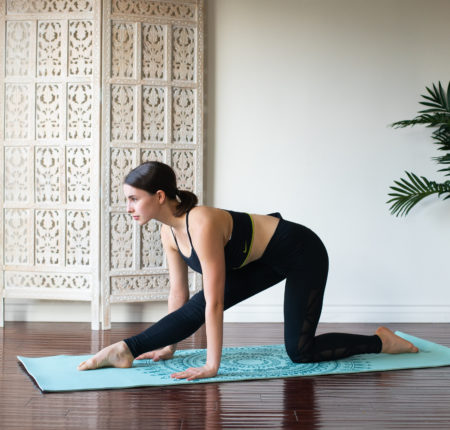

Hip Flexor Stretch
Like with the runner’s stretch, begin in a kneeling position, before straightening the back leg, lifting your heel off the ground and placing the opposite hand on the floor. Twist to open the body into that front leg, lifting the arm and gaze to the ceiling. Hold for 30 seconds, right and left.
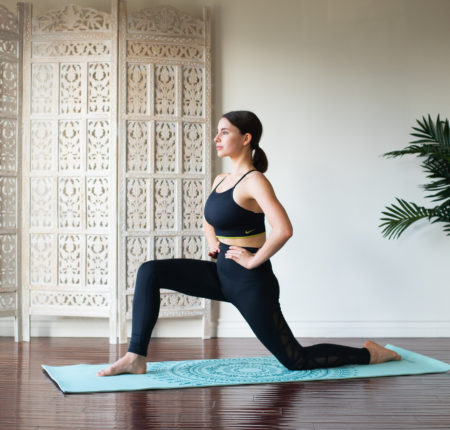

Hip Flexor Stretch & Spine Rotation
Repeat the steps above, but also squeeze the glutes under to maximise the stretch. Feel the length of the spine as you rotate the upper body for the twist and hold for 30 seconds, right and left.
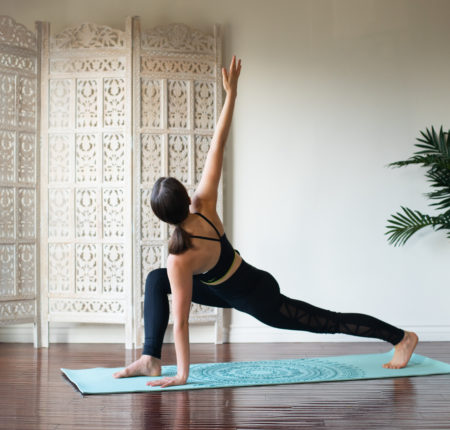

Glute Stretch
Have one leg extended to the ceiling, the other bent, turned out and resting on the other leg with the outside of the foot. Pull the back off the straight leg into your chest to increase the stretch. Hold for 30 seconds, right and left.
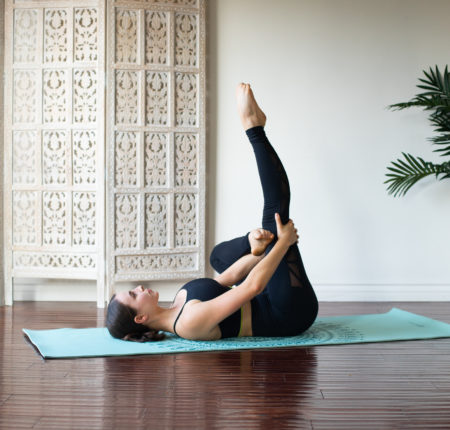

Side Stretch
With one leg extended to the side and other tucked in across the midline, side-bend over the extended leg while keeping the shoulders stacked. Hold for 30 seconds, right and left.
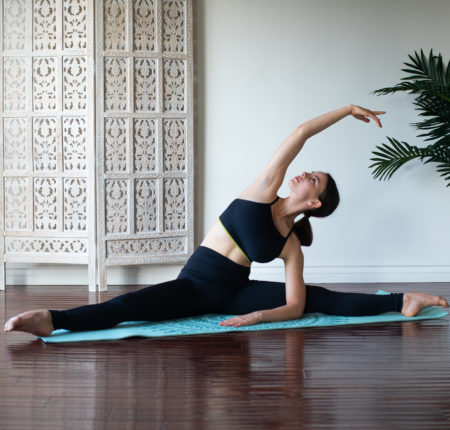

I hope that this guide will help you start your stretching routine journey! For more fitness advice, be sure to check out the fitness section of my blog. Thanks for reading!

